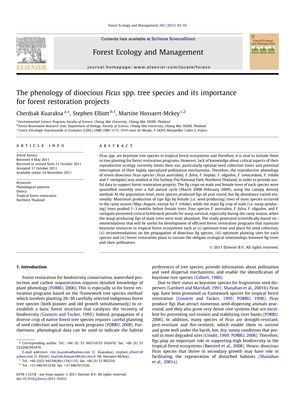The Phenology of Dioecious Ficus Species and Its Importance for Forest Restoration Projects
November 2011
in “
Forest Ecology and Management
”

TLDR Understanding the fruiting patterns of Ficus trees can improve forest restoration by ensuring pollinators survive and biodiversity is supported.
The study conducted from March 2008 to February 2009 in Northern Thailand focused on the reproductive phenology of seven dioecious Ficus species and its relevance to forest restoration. It was found that most species produced figs year-round, with female trees having maximum ripe fig production during the rainy season and male trees peaking earlier. There were critical periods for wasp survival, especially in the rainy season when male figs were least abundant. Recommendations for forest restoration included optimal seed collection times and strategies to sustain fig-tree pollinator relationships. The study highlighted the keystone role of Ficus spp. in tropical ecosystems and their contribution to biodiversity. However, the specific number of trees or individuals studied was not mentioned in the summary.